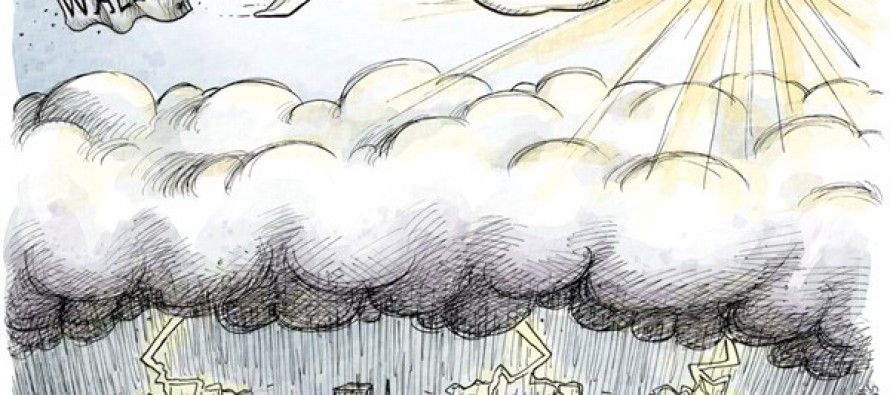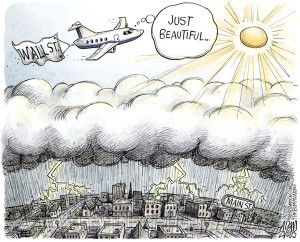Tweaking the Sept. jobs report

I'm no mathematician, but I understand economics. It doesn't take a professional to see the “jobs, jobs, jobs” campaign rallying cries seem to be falling on deaf ears. Unemployment may have dropped a driblet, but it remains historically high. And hiring continues to look bad.
While the government jobs report is often called a fairytale because of how it is reported, the real numbers deeper within just don't look good.
Sept. jobs report
The September jobs report saw the U.S. economy add only 148,000 jobs — notably worse than expected by economic forecasters. The report was delayed more than two weeks thanks to the government shutdown.
CNBC reported, “Job-creation weakens, but unemployment rate down.”
Unemployment under George W. Bush
Remember when George W. Bush was President — even going back to Ronald Reagan's Presidency — the jobs report was reported by the media far differently? It was all doom and gloom under Bush and Reagan.
What is apparent is that this presidential administration is desperate to get to the unemployment numbers the country enjoyed under Bush – any way they can.
When President Bush took office in January, 2001 the unemployment rate was 4.2 percent, according to the Bureau of Labor Statistics.
After the September 11, 2001 attacks, the highest the unemployment rate rose was 6.3 percent.
Then the economy calmed down and finally grew again, lowering unemployment to the 5 percent range, where it stayed until 2003.
The unemployment rate was 5.4 percent when Bush was reelected in November, 2004.
The unemployment rate dipped to 4.9 percent and remained in the 4 percent range through November, 2007.
By December, 2007 the unemployment rate rose to 5.0 percent, and continued to rise slowly and up to 6.1 percent in August 2008. And then the economy tanked, and the unemployment rate shot up to 6.8 percent, ending December, 2008 at 7.3 percent.
Current unemployment
Current economists had been predicting 180,000 new jobs and static jobless rate. This is what's known as stagnation.
Stagnation is a prolonged period of slow economic growth, usually accompanied by high unemployment.
The jobs report was bad for women as well. The the number of women working in America dropped from 68,005,000 in August to 67,851,000 in September—a decline of 154,000, CNS News reported.
Breakdowns
“Among the major worker groups, the unemployment rates for adult men (7.1 percent), adult women (6.2 percent), teenagers (21.4 percent), whites (6.3 percent), blacks (12.9 percent), and Hispanics (9.0 percent) showed little or no change in September,” the BLS reported. “The jobless rate for Asians was 5.3 percent.”
While reports showing the unemployment rate fell to 7.2 percent, the lowest since November 2008, the important details were in the labor-force participation rate — holding at near 35-year lows, according to the Bureau of Labor Statistics.
Between March and April, it dropped by 342,000. But because the official unemployment rate counts only those workers who are actively seeking work, that actually made the unemployment rate go down.
The labor-force participation rate takes into account a broader measurement of unemployment and underemployment, including those who have quit looking for work. The BLS reported this number is at 13.6 percent.
The Washington Post described it differently: The “labor force participation rate” “tracks the number of working-age Americans who are holding a job or looking for one,” the WaPo said. And they claim, “For one thing, the trend predates President Obama.”
The U.S. economy has to add at least 150,000 jobs net each month just to maintain. This jobs report means we are worse than September, but only slightly.
In September, 136,000 people left the workforce. The number of employed in the same population survey only increased 133,000, demonstrating the ongoing economic stagnation. And according to economists, this is another indication of the decreasing value of the jobless rate as an economic indicator.
“The number of long-term unemployed (those jobless for 27 weeks or more) was little changed at 4.1 million,” the BLS reported. “These individuals accounted for 36.9 percent of the unemployed.”
“The number of persons employed part time for economic reasons (sometimes referred to as involuntary part-time workers) was unchanged at 7.9 million in September,” said the BLS. “These individuals were working part time because their hours had been cut back or because they were unable to find a full-time job.”
And the number of people currently unemployed, but looking and available for a job was at 2.3 million.
Does this sound like a health country?
Related Articles
No Attempt There To Hide
Anthony Pignataro: There’s a killer story in today’s Los Angeles Times that reports how California High-Speed Rail Authority have taken
Companies, jobs streaming out of Calif.
Sept. 29, 2012 By John Seiler The progressive California utopia foisted on us by ex-Gov. Arnold Schwarzenegger and current Gov.
Bills Report 2: Enviro reform hidden under basketball stadium
SACRAMENTO — The California Legislature ended the 2013 legislative session Thursday by passing hundreds of new bills. Most of the




